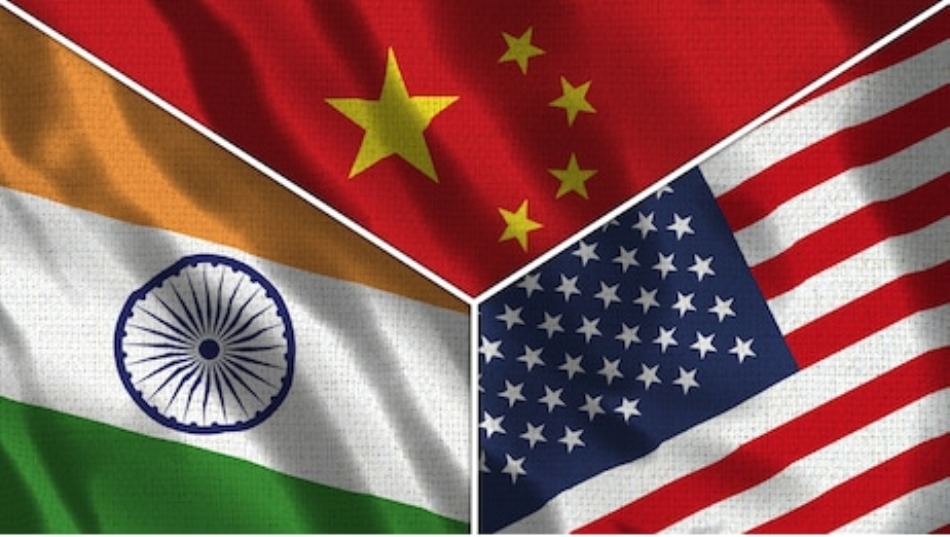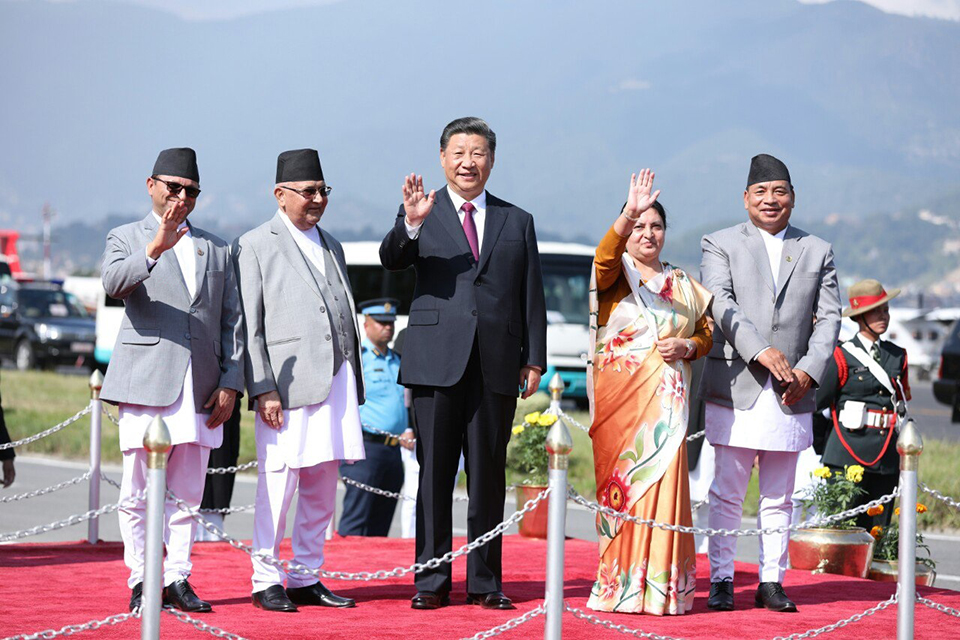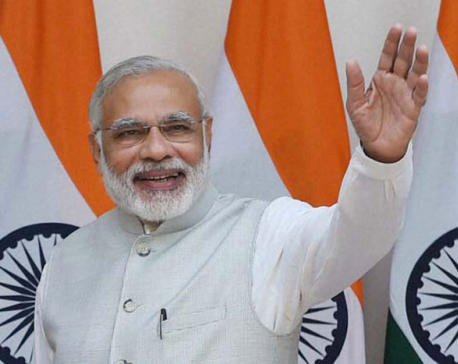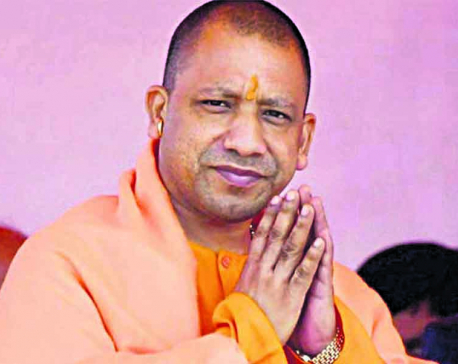
OR
Nepal is falling into a trap of India, China and the US
Published On: January 18, 2021 12:15 PM NPT By: Mahabir Paudyal | @mahabirpaudyal


Mahabir Paudyal
Mahabir Paudyal is an opinion writer at Republica with interest on history, domestic politics and international relations.mahabirpaudyal@gmail.com
More from Author
- Nepal is falling into a trap of India, China and the US
- Prime Minister Oli is pushing the country to precipice. Is there a way to stop him?
- How can you be so irresponsible about education?
- What is Nepali Congress thinking about China?
- Fellow Nepalis, fear the government, fear as much for the country
All eyes on China

(Chinse President Xi Jinping in Kathmandu during his Nepal visit in October, 2019)
The commentaries coming from the south and increasing concerns from the north indicate how sensitive geopolitical times lie ahead of us.
Nearly all the commentaries post December 20, 2020 in New Delhi newspapers have included China factor in relation to the House dissolution in Nepal. Former diplomat Shyam Saran wrote that House dissolution is a tactical setback to China and Nepal is becoming a geopolitical playground between China and the US. In another article suggestive of a celebratory note, professor S D Muni stated that “India was playing its cards cautiously and craftily with cultivated façade of non-interference” and with it India has achieved its immediate “tactical goals” of “exposing shallowness of Oli’s opportunistic and politically driven anti-Indian nationalism,” “shattering ruling Nepal Communist Party (NCP)” and “embarrassing China.”
In the process, the New Delhi-based commentators have revealed that New Delhi was cautiously playing its cards, even pitting anti-Oli forces against Oli and vice-versa in the face of rising influence of China in Nepal. That means, New Delhi, which was interpreting major political events in Kathmandu—from remapping the country to include the territories of Kalapani, Limpiyadhura and Lipulekh to unity of Nepal Communist Party—as provoked and supported by China, was invested to regain its ‘lost’ clout in Nepal.
In this situation, the picture of geopolitical competition can be imagined. If Washington approaches Nepal for implementing TPSA, which is highly likely since it is coded into their law, New Delhi will surely support the move (it should be noted that since the 1962 war with China, a key foreign policy strategy of India against China has been to support the Tibetans), Beijing will surely object to it and will pressure Kathmandu to resist the American pressure. Once China resists and asks Kathmandu to resist, given the rising confrontation between China and the US, Washington will surely add further pressure on Kathmandu to resist. This Catch-22 could result in miscarriage of BRI and MCC projects as well.
With their repeated adventurism in internal politics, the Chinese are losing their earlier impression of being a non-interfering neighbor. China today is visibly distraught about the vertical split in NCP and House dissolution and they even seem to regret putting so much trust on Prime Minister Oli and NCP.
On the other hand, India has taken the House dissolution as a move that could potentially be in favor of India to counter rising influence of China in Nepal. New Delhi seems to think that negotiation call to resolve the boundary issue so persistently pushed by Nepal under Oli will become weak or Nepal will lose the bargaining power to push it further with Kathmandu having to concentrate its energy in managing the new political crisis created by its own folly. The refusal of Prime Minister Modi to meet Nepal’s foreign minister Pradeep Kumar Gyawali during his visit there this week has something to communicate.
Faltering Nepal
Apparently, Prime Minister Oli is sending signals that he will not bungle on foreign policy. He has sent the message that dissolution of the House of Representatives will not mark the end of Nepal’s engagement with China and it will not dissipate Nepal’s drive to bring back the territories occupied by India.
Prime Minister tried to appease both China and India in his address to the National Assembly on January 10. Both India and China wish well of Nepal, this is why officials from both India and China are visiting Nepal in a rising frequency, he argued. He vowed to bring back the territories occupied by India and at the same time did not fail to mention that he has been put in a difficult situation by the party colleagues precisely because he initiated the measures to expand trade, transit and connectivity with China.
He accused his opponents of ganging up against him after Nepal endorsed the new map by including the territories of Lipulekh, Limpiyadhura and Kalapani into it.
Recalling his ‘resistance’ against the 2015 blockade, signing of trade and transit treaty with China and opening border points with China, he said this is particularly why he was removed from power in 2016.
He is sending contradictory messages to China and India.
To India, he is saying his opponents sought to remove him from power because he was expanding ties with China. To China, he is saying his opponents sought to remove him from office and split the party because he was standing tough against India.
Chinese, Indians and Americans are no fools. They will not give up on their strategic interests, irrespective of whether Nepal is in stability or turmoil. For example, America might use its weight to obligate Nepal to honor TPSA and get the MCC endorsed. India might stand behind. China might warn Nepal against doing just that.
This, however, does not seem to be the matter of concern for the politicos in Kathmandu. The debate back home is centered on who is whose dalaal (pawn). From 2016 up until 2019 (when president Xi Jinping made a visit to Nepal), Prime Minister K P Oli and his ministers in the cabinet presented themselves as the defenders of BRI and China. Pushpa Kamal Dahal entrenched this impression by needlessly taunting America.
Today they are projecting each other as dalaal of India. Until June, 2020 Oli was suggesting that Dahal was colluding with India to topple him down. Now Dahal is making the same allegations about Oli—that Oli demolished the parliament on India’s behest.
India’s position on China, already solidifying with an alliance with the US under its Indo-Pacific Strategy, is hardening due to prolonged standoff with it at its northern frontiers. Thus, when we talk about India in terms of geopolitics today it inherently brings the superpower across the Pacific into the picture.
A long held perception in Kathmandu that the US and India stand on the same page when it comes to China has been substantiated by a recently declassified internal document of the Trump administration which projects “strong India, in cooperation with like-minded countries” as a “counterbalance to China.”
So when we talk about India in Nepal, we talk about the US too.
Divided and weak
Intellectuals, media and political parties are now directing their fury at the government. The anger and anxiety is about what the Supreme Court will do and its verdict is going to be a matter of dispute for sure. Prime Minister Oli and his rivals are making cheap jokes about each other, denigrating each other, making fun of each other, projecting themselves as the persons to rely on and others as the gaddars, betrayers--exposing their vanity and stupidity in the process.
The government is weak and parties are divided on vital political agenda. With weak regime and disunity among the parties, big powers can bargain with the position of strength.
Nepal is descending into a situation where it won’t be able to withstand the pressure from India, China and the US. Political turmoil will make it even worse.
We need a leadership who can draw the red line and say to China, India and the US confidently and clearly what Nepal can and cannot do for them.
Look for such faces in the government and political parties and draw your conclusion.
You May Like This

Nepal good friend of India: Deuba, India ready to support Nepal's development: Modi
NEW DELHI, Aug 24: Prime Minister Sher Bahadur Deuba, who is currently on a five-day state visit of India, said... Read More...

India will continue its support in Nepal’s development activities: Adityanath
KATHMANDU, Dec 25: Chief Minister of Indian state of Uttar Pradesh, Yogi Adityanath, has said he would put in maximum... Read More...

India builds 3 educational institutions in Kaski
KATHMANDU, Nov 19: Three educational institutions were built with Indian assistance of Rs 126.6 million in Kaski district. ... Read More...









Just In
- Heavy rainfall likely in Bagmati and Sudurpaschim provinces
- Bangladesh protest leaders taken from hospital by police
- Challenges Confronting the New Coalition
- NRB introduces cautiously flexible measures to address ongoing slowdown in various economic sectors
- Forced Covid-19 cremations: is it too late for redemption?
- NRB to provide collateral-free loans to foreign employment seekers
- NEB to publish Grade 12 results next week
- Body handover begins; Relatives remain dissatisfied with insurance, compensation amount








Leave A Comment